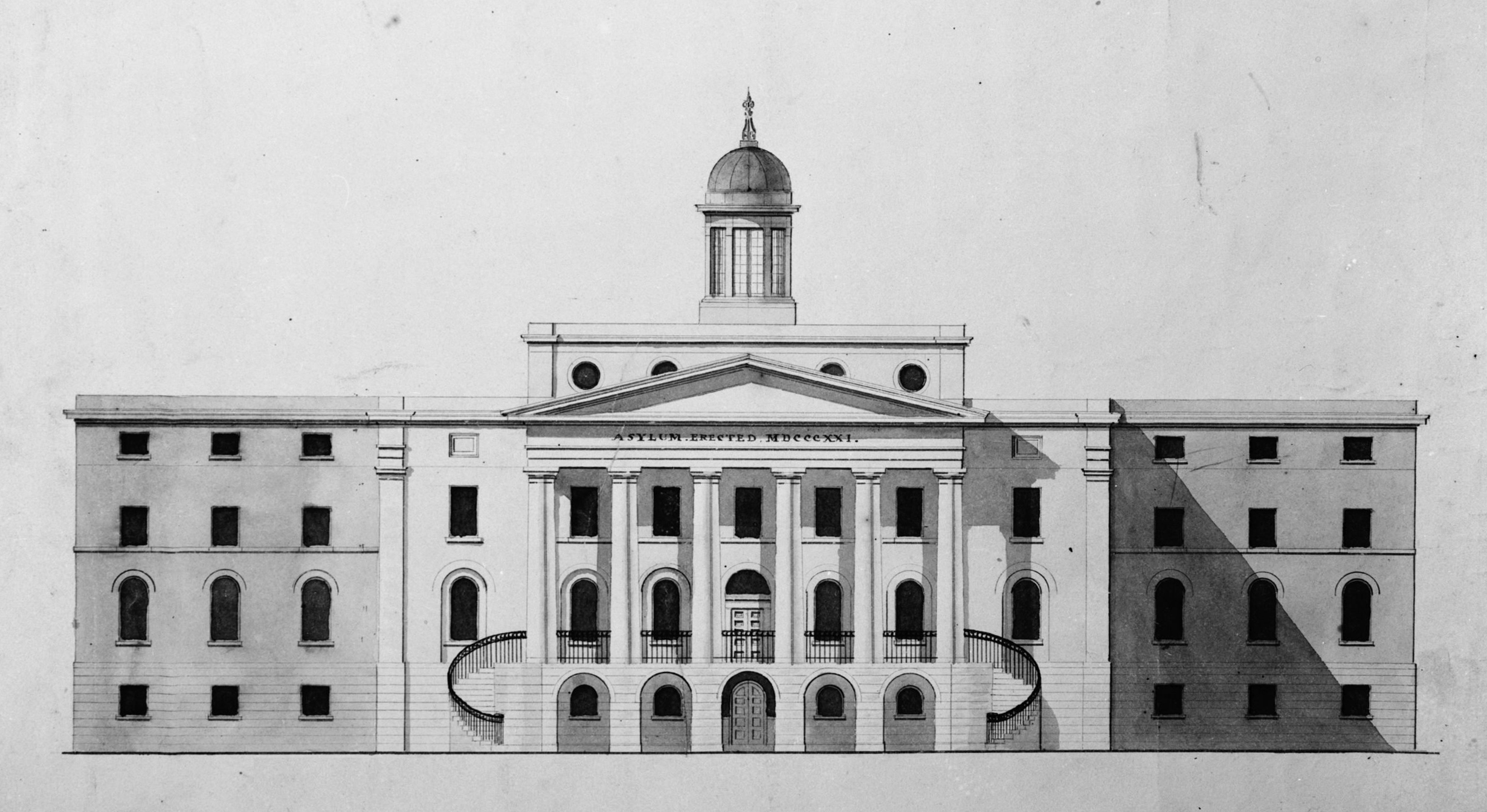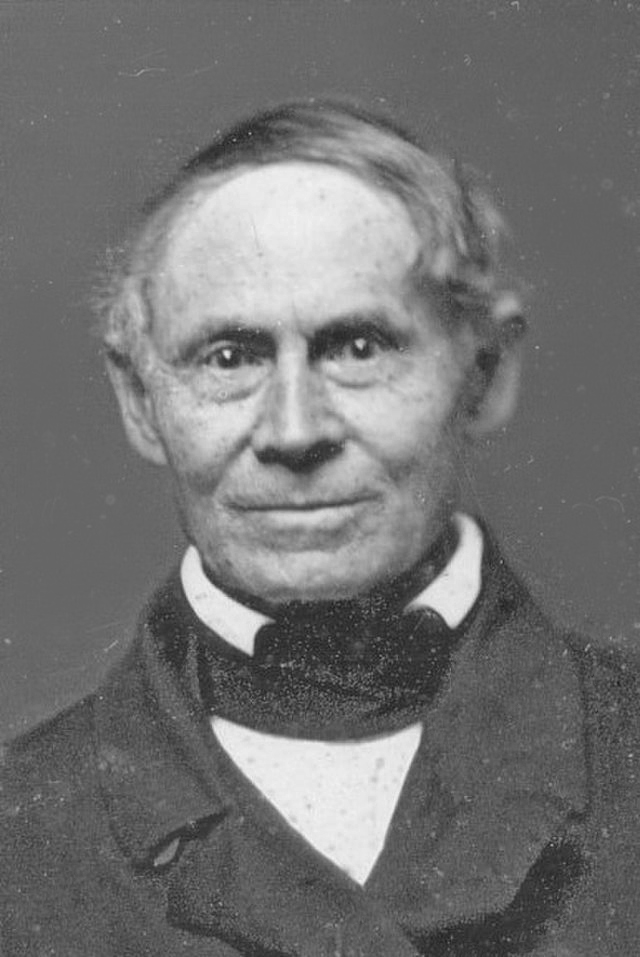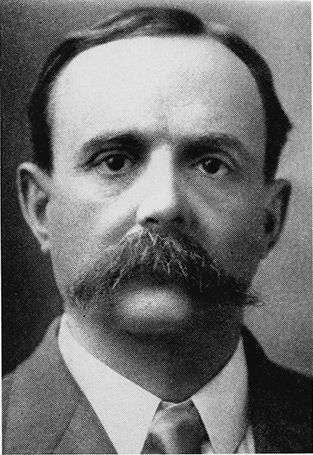
Architect Robert Mills, who received a commission to design and construct the Washington Monument, designed the State Hospital asylum with a central block and a large portico with supporting columns. It was built between July 1822 and spring 1828.
When I was growing up in Columbia in the 1950s and ’60s, referring to “Bull Street” was a perfectly acceptable euphemism for saying someone was crazy and needed to be put away. Folks from other areas of the state said “going to Columbia” to refer to the need to check into the asylum.
It is remarkable that South Carolina was the second state of the 22 states then in America to approve a state facility for the mentally ill, considering the lack of public demand for an asylum; the public was more interested in paying for a state prison if anything, and the first prison was not built in South Carolina until after the Civil War.
South Carolina spent $1 million on internal improvements, mostly on roads and buildings, from 1817 until 1821, all the while a man from Spartanburg, Samuel Farrow, was urging the legislature to appropriate money to build an asylum in Columbia.
Samuel Farrow fought in the Revolutionary War, became a lawyer, served as the lieutenant governor of South Carolina, and was a member of the United States Congress during the War of 1812. He gave up his Congressional seat in 1815 so that he could be elected to the South Carolina legislature to promote the idea of the state paying to have an asylum built. He was not a good speaker — one person referred to him as a country bumpkin — but he was persistent (full disclosure: Samuel Farrow was my fourth-great-grandfather’s brother). Finally in 1818, the legislature appointed Samuel Farrow to chair a committee to consider approving the construction of an asylum, but it did not go well.
The Farrow Committee presented a bill to the legislature in 1819 to approve construction of an asylum that the legislature voted down. Worse, Samuel Farrow lost his bid for reelection in 1820 and had to go back to Spartanburg. Fortunately, Farrow had solicited help from William Crafts, Jr., who similarly was devoted to the concept of a public asylum and, unlike Farrow, was an effective orator.
William Crafts, Jr., was born in Charleston, educated at Harvard, and became a writer in South Carolina. He lost a race for the South Carolina Senate in 1816 but won a seat in a special election in 1820 and was able to persuade the legislature to pass the bill that Samuel Farrow wanted. True to his reputation as an orator, William Crafts spoke an hour at the dedication ceremony of the new asylum! Samuel Farrow won back his legislative seat in 1822 and was appointed to a commission to oversee the construction of the asylum. Robert Mills was the commissioner of the Board of Public Works and was responsible for the design of the new building.
Robert Mills was born in Charleston, and he studied architecture with Thomas Jefferson in Washington, D.C. While in South Carolina, he designed 12 jails and 16 courthouses. Later, he would design the Washington Monument and the General Post Office in Washington.
Robert Mills designed the asylum in Columbia with a central block and a large portico with six supporting columns. There were two wings receding at an oblique angle. The ceilings were vaulted with brick, and the roof was covered with copper to make the building as fireproof as possible.
The plans were beautiful and modern but expensive, and construction was slow. The legislature was asked every year for more money, from the start of construction in July 1822 — 201 years ago — until the building was completed in the spring 1828. By the end, everyone was tired, and the legislators had had enough. They decided the new asylum would have to charge patients to pay the expenses of the asylum, and indigent patients would be the financial responsibility of the town and county from where they came. The legislature refused to appropriate funds to pay the expenses of the asylum.
Robert Mills had recommended a brick wall be built to enclose the original 4-acre site of the hospital structure; the wall was completed in 1827. This 12-foot wall was extended in 1853 to enclose 9 acres as the asylum property increased.
During the Civil War, a Union officer prison camp was operated in an open field near the Congaree River in Columbia, but since no fence was used, 400 prisoners escaped over two months. The remaining 1,200 Union officers were moved into the walled area of the asylum property to keep an eye on them. Chester DePratter, Ph.D., a research professor at the South Carolina Institute of Archaeology and Anthropology, led an archaeological excavation at the site of the prison camp in 2014. He discovered holes in the ground that the Union officers dug in an attempt to stay out of the weather.
After the Civil War, a man from Maryland who had been a Union Army surgeon, J.F. Ensor, became the superintendent of the Lunatic Asylum in Columbia. He donated his own money and solicited money from the Quakers in Philadelphia to keep the hospital open. By 1874, Ensor had added central heating and plumbing to the Mills building.


In 1962, William S. Hall was the superintendent of the State Hospital when he led the decision to lower the 12-foot wall to a step-over wall and added a wrought iron picket fence. Hall and others believed this decision would be better for the citizens of Columbia by creating a more healthful attitude toward the mentally ill by taking down the massive wall separating the town citizens and the patients; also, the openness would be better for the patients by making them feel part of the city.
The bricks from the wall were saved for other uses. The Chapel of Hope was built from 1963 until 1965 with the 1827 handmade bricks. The chapel was a nondenominational place of worship for those living or working at the state hospital. The chapel held 600 worshippers, and the altar was designed to be moved to accommodate the specific requirements of the Protestant, Jewish, and Catholic faiths. The Chapel of Hope was built on Pickens Street, the street running in front of the Babcock Building and alongside the Mills building.
The bricks also have been awarded as a gift to individuals or organizations that have made outstanding contributions to the cause of mental health in South Carolina. The “Order of the Brick” recipients are approved by the South Carolina Mental Health Commission, chaired by Gregory Pearce, who started his career as a clinical counselor in 1970 and was appointed the director of Crafts-Farrow State Hospital in 1986.
The second building on the State Hospital property to house patients was the building that later would be named for Dr. James Woods Babcock, who was the state hospital superintendent from 1891 until 1914. The building was designed by architect George Edward Walker in 1858. Walker started on the south wing but died in 1863 at age 36. The design and construction of the north wing and the central section were overseen by different architects, using the original Walker plans. The three-story building was finished in 1885.
The Babcock Building suffered two fires, a small fire in December 2018 and a major fire in September 2020. The building currently is being renovated into 200 apartments as part of the new BullStreet District.
Not everyone who lived on the grounds of the State Hospital was a patient. A group of houses near the front gate facing Bull Street provided homes for physicians and their families, including Merlyn Borgstedt, a second-year psychiatric resident in 1963. Dr. and Mrs. Borgstedt’s three sons considered the asylum property their home, they went to public school, and they had friends over to play; still, unusual events happened. One day a patient at the hospital walked into the Borgstedt house and, as two of their sons remember, their mom quietly but quickly walked out of the house holding her sons’ hands and she waited outside until a team of aides came to get him.
One of the Borgstedt sons remembers a hard-working crew that kept the central grounds neat around the front gate facing Bull Street. The children living in the physician homes liked to use the manicured hedges as forts, and they climbed the magnolia trees to throw bloom pods at each other. The 12-foot wall was irresistible. The older children would climb the wall and walk along the top, tempting what they assumed would be sure death if they fell.
Kevin Borgstedt went to Hand Junior High and took the Columbia city bus home to the State Hospital. He enjoyed the days a new driver would stop the bus and Kevin would get off. “You sure this is your stop?” the driver would ask. “Yes, I live here!” Kevin would respond. “Wait, what?”
Kevin wanted to learn a musical instrument for band class at Hand Junior High, so the state hospital administrators took up the challenge by providing Kevin a trumpet, a starter set of lessons and a combination of staff members and patients in the hospital who met to practice small combo tunes. The group played their first public gig at the First Presbyterian Church in Columbia.
Page Ellington was born enslaved in 1835 in North Carolina. Page believed he was fathered by William Ellington, a black slave trader. After moving to Columbia, Page Ellington was enslaved by John McCully, a white man. Page learned to read, write, and solve math problems so he could work as a messenger at the telegraph office. Page Ellington learned construction and became a master bricklayer.
In 1875 a rainstorm with wind and hail passed through Columbia. The most serious damage was to the First Presbyterian Church steeple, blowing it off the church. The steeple stayed down 13 years until the church hired Page Ellington to build a new, 188-foot tall steeple, the highest structure in the city. Page Ellington then became Dr. James Woods Babcock’s construction manager for many of the buildings on the state hospital grounds.
The State Hospital closed in 1983, and the property has sat empty since but for the William S. Hall Children’s Institute that moved away in 2015.
Hughes Development Corporation con-tracted to buy 165 acres of the State Hospital property in 2010 over a 7-year period, extended to 181 acres over 8 years when the Hall Children’s Institute building was added in 2015. In 2015, Hughes started construction of a baseball park and the First Base Building, both opening in April 2016. Since then, the Downtown Church has renovated Central Energy designed by Garvin Design Group, and for which they won a Historic Columbia Preservation Award. Additionally, Merrill Gardens built a 196-unit active senior community, and REI Co-op opened a location in the BullStreet District. Some of the current construction projects include conversion of the Babcock Building to apartments, the WestLawn Building, and Bennet at BullStreet apartments. The University of South Carolina plans to move its medical school to the BullStreet District.
One of the early projects in the BullStreet District was to open Smith Branch Creek that had been piped underground since the 1960s. The creek, once opened, fed into a new 2-acre pond that became part of a 20-acre public park with walking and running paths and a dog park. Hughes Development Corporation paid for the construction of the park and donated the property to the City of Columbia. The park was dedicated to Page Ellington in memory of the master bricklayer.
References: Asylum Doctor by Charles S. Bryan. Moonlight, Magnolias & Madness by Peter McCandless. Special appreciation to archaeologist Chester DePratter, to Bryson and Kevin Borgstedt for their memories, and especially to Greg Pearce, the chair of the South Carolina Mental Health Commission, who shared his State Hospital institutional knowledge.










